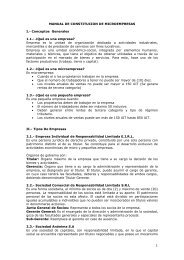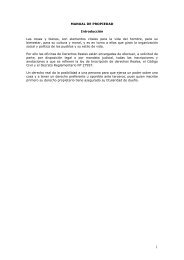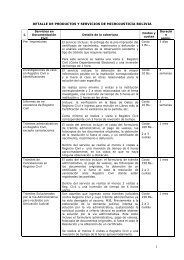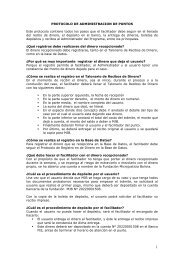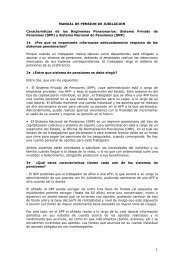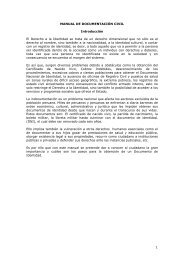ICISS report - International Coalition for the Responsibility to Protect
ICISS report - International Coalition for the Responsibility to Protect
ICISS report - International Coalition for the Responsibility to Protect
Create successful ePaper yourself
Turn your PDF publications into a flip-book with our unique Google optimized e-Paper software.
57<br />
7. THE OPERATIONAL<br />
DIMENSION<br />
7.1 Military interventions <strong>for</strong> human protection purposes have different objectives than<br />
both traditional warfighting and traditional peacekeeping operations. Such interventions<br />
<strong>the</strong>re<strong>for</strong>e raise a number of new, different and unique operational challenges. Because <strong>the</strong><br />
objective of military intervention is <strong>to</strong> protect populations and not <strong>to</strong> defeat or destroy an<br />
enemy militarily, it differs from traditional warfighting. While military intervention operations<br />
require <strong>the</strong> use of as much <strong>for</strong>ce as is necessary, which may on occasion be a great deal,<br />
<strong>to</strong> protect <strong>the</strong> population at risk, <strong>the</strong>ir basic objective is always <strong>to</strong> achieve quick success with<br />
as little cost as possible in civilian lives and inflicting as little damage as possible so as<br />
<strong>to</strong> enhance recovery prospects in <strong>the</strong> post-conflict phase. In warfighting, by contrast, <strong>the</strong><br />
neutralization of an opponent’s military or industrial capabilities is often <strong>the</strong> instrument <strong>to</strong><br />
<strong>for</strong>ce surrender.<br />
7.2 On <strong>the</strong> o<strong>the</strong>r hand, military intervention operations – which have <strong>to</strong> do whatever it<br />
takes <strong>to</strong> meet <strong>the</strong>ir responsibility <strong>to</strong> protect – will have <strong>to</strong> be able and willing <strong>to</strong> engage in<br />
much more robust action than is permitted by traditional peacekeeping, where <strong>the</strong> core task<br />
is <strong>the</strong> moni<strong>to</strong>ring, supervision and verification of ceasefires and peace agreements, and<br />
where <strong>the</strong> emphasis has always been on consent, neutrality and <strong>the</strong> non-use of <strong>for</strong>ce.<br />
The Panel on United Nations Peace Operations compiled in 2000 a thorough review of <strong>the</strong><br />
operational challenges facing United Nations military missions, but <strong>for</strong> <strong>the</strong> most part that<br />
panel focused on traditional peacekeeping and its variations, not <strong>the</strong> more robust use of<br />
military <strong>for</strong>ce – not least because <strong>the</strong>re is not within UN headquarters <strong>the</strong> kind of logistic<br />
planning and support, and command and control capacity, that would make possible ei<strong>the</strong>r<br />
warfighting or military interventions of any significant size. Their <strong>report</strong> confirmed that “<strong>the</strong><br />
United Nations does not wage war. Where en<strong>for</strong>cement action is required, it has consistently<br />
been entrusted <strong>to</strong> coalitions of willing states.”<br />
7.3 The context in which intervention operations take place also has important operational<br />
significance. Military intervention <strong>to</strong> protect endangered human lives should and will<br />
occur only as a last resort, after <strong>the</strong> failure of o<strong>the</strong>r measures <strong>to</strong> achieve satisfac<strong>to</strong>ry results.<br />
Inevitably, it will be part of a broader political strategy directed <strong>to</strong>wards persuading <strong>the</strong><br />
targeted state <strong>to</strong> cooperate with international ef<strong>for</strong>ts. The consequences <strong>for</strong> such operations<br />
suggest that <strong>the</strong> specific nature of <strong>the</strong> task <strong>to</strong> protect may over time lead <strong>to</strong> <strong>the</strong> evolution of<br />
a new type of military operation, carried out in new ways.<br />
PREVENTIVE OPERATIONS<br />
7.4 There are two distinct categories of preventive military operations, with quite distinct<br />
characteristics. The first is “preventive deployment,” which involves <strong>the</strong> positioning of<br />
troops where <strong>the</strong>re is an emerging threat of conflict, with <strong>the</strong> consent of <strong>the</strong> government or<br />
governments concerned, <strong>for</strong> <strong>the</strong> primary purpose of deterring <strong>the</strong> escalation of that situation<br />
in<strong>to</strong> armed conflict. The deterrent lies not in <strong>the</strong> military capability of <strong>the</strong> <strong>for</strong>ce but in <strong>the</strong><br />
interest <strong>the</strong> Security Council has shown by authorizing <strong>the</strong> deployment, <strong>the</strong> placing of<br />
relevant parties under close international scrutiny, and <strong>the</strong> implication of willingness by <strong>the</strong><br />
international community <strong>to</strong> take fur<strong>the</strong>r action if <strong>the</strong>re is a resort <strong>to</strong> violence.



